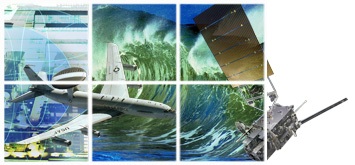KBSI is developing an innovative power pack for remotely deployed buoys. The buoys enable communication, via a distributed sensor network, among the Navy’s underwater assets and assets above water. The P3 technology uses wave power rather than batteries to power the buoy sensors.
The U.S. Navy and commercial oceanographic sensor manufacturers are building a distributed at sea communications network capability that will enable communications among various platforms such as Unmanned Undersea Vehicles (UUVs), Unmanned Surface Vehicles (USVs), and even other oceanographic sensors. By coupling the undersea communications network with the sea mainstream Global Information Grid (GIG) communications infrastructure, the distributed network hopes to enable end-to-end connectivity among surface, air, shore, undersea platforms, and undersea sensors. The goal of this network is to multiply the capabilities of existing platforms by enabling two-way communication both below and above the water and, in effect, enabling ultimate Network Centric Warfare (NCW) capabilities.

